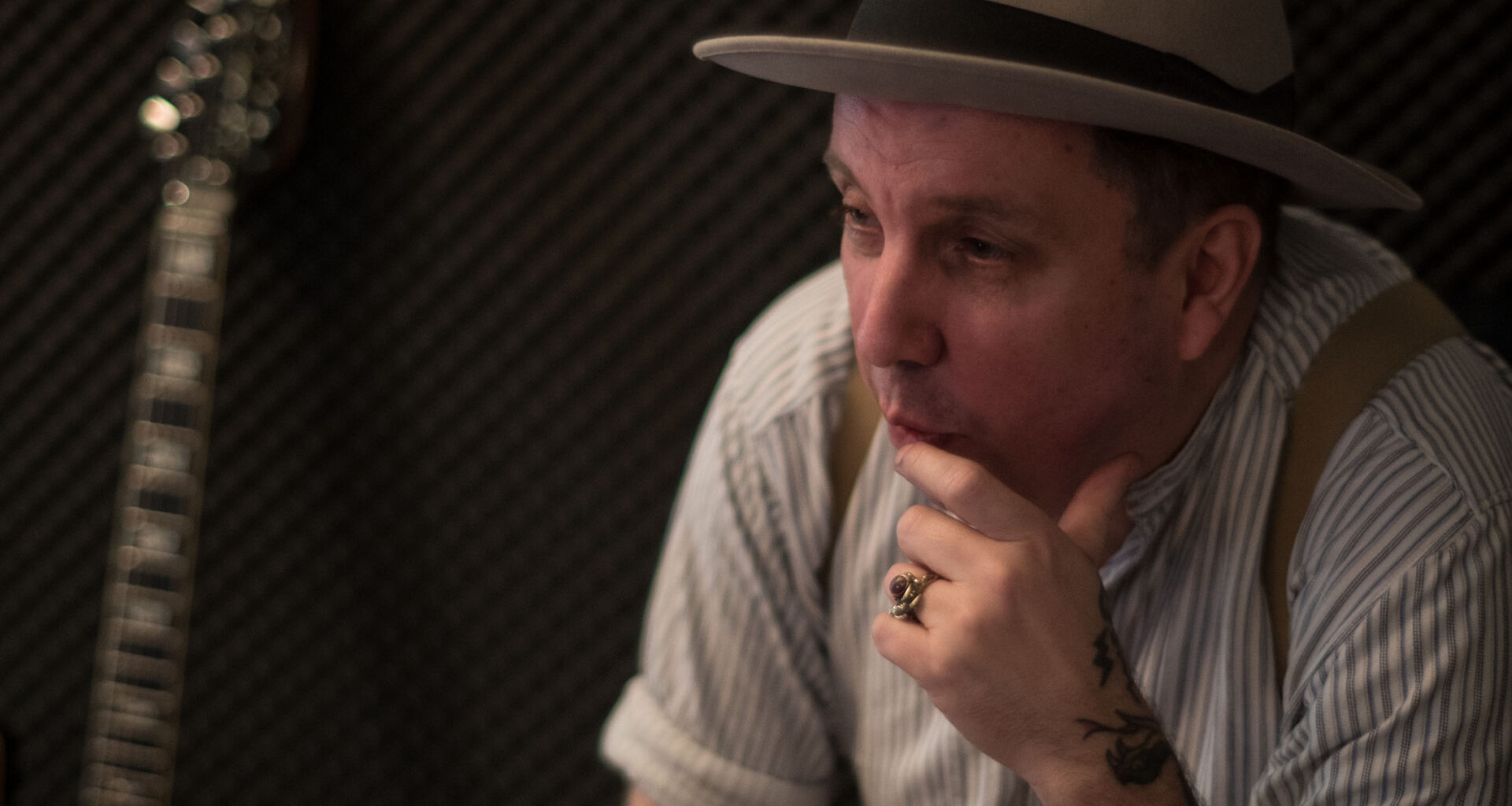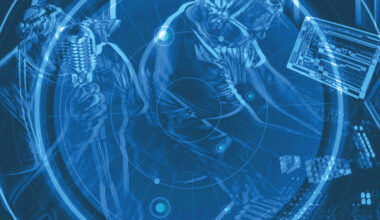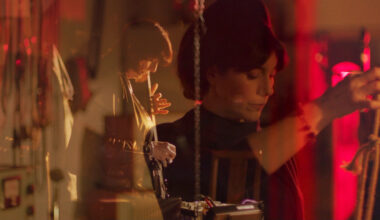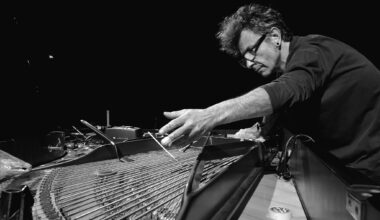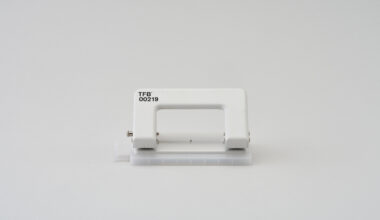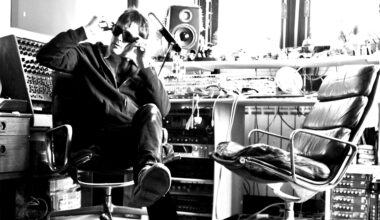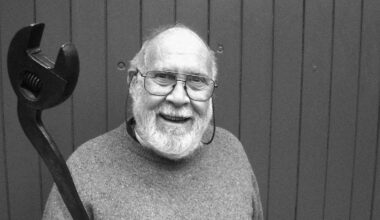The inside story of ‘Phonox Nights’, the forthcoming album from Andrew Weatherall and Nina Walsh’s Woodleigh Research Facility project, which includes some of Weatherall’s final original recordings
A jumbo mirror ball hangs above the dancefloor at Phonox nightclub in Brixton, south London, like a distant star. As icons of dance music, these revolving spheres have few peers, delivering the electric bolts of light and synaptic promise of transcendence that act as elemental forces within such de facto escape rooms.
It was under this particular glittering orb that Andrew Weatherall played what would be among his last DJ sets, at A Love From Outer Space (ALFOS), the monthly club he ran in collaboration with Sean Johnston. It was here too that he road-tested his final original recordings, nine of which are about to be released as ‘Phonox Nights’, a new album from his Woodleigh Research Facility project with Nina Walsh.
Weatherall crafted all of these tracks in partnership with Walsh, a less public but no less crucial presence in the tale of one of the most important figures in British electronic music. In many ways, his story is her story and it’s one that traverses several decades, multiple generations, and a celebrated collection of music, people and moments in time that cemented Weatherall’s place in the pantheon of dance culture long before his sudden and shocking passing almost four years ago.
Weatherall and Walsh established Woodleigh Research Facility in 2015, producing two albums – ‘The Phoenix Suburb (And Other Stories)’ that same year and ‘127 To Facility 4’ in 2018 – plus a handful of other releases. More WRF material has emerged since then, including the posthumous collection ‘Torschlusspanik’, but ‘Phonox Nights’ is significant and symbolic for many reasons. Most notably because Weatherall was working with Walsh on the album in the days before he died of a pulmonary embolism in February 2020 at the age of just 56.
The tracks were recorded at Walsh’s Facility 4 studio, located in a pindrop somewhere between Streatham and Mitcham. Describing the environs of this space as “kind of medieval”, Walsh recently abandoned the rogue denizens of south London for the altogether calmer backdrop of rural Dorset. Here, among the rolling hills and vertiginous skies that played host to Thomas Hardy as he wrote ‘Far From The Madding Crowd’, she is now free to hatch ideas for fresh creative endeavours at what has been christened Facility 5. Understandably, ‘Phonox Nights’ is central to these plans.
During the course of a two-hour conversation, Nina Walsh employs an eclectic range of adjectives when she talks about Weatherall – “artist”, “conceptualist”, “curator”, “arranger”, “librarian”, “flaneur” and “wardrobe master”. But she also perceives the ‘Phonox Nights’ album as the moment that his years of wizarding around with the magic of music-making reached a point of realisation where he was genuinely firing the wand.
Weatherall famously had little working knowledge of recording studios when he assisted Paul Oakenfold on the club remix of ‘Hallelujah’ for Happy Mondays in 1989. His last two solo albums, however, 2016’s ‘Convenanza’ and 2017’s ‘Qualia’ – the latter featuring the credit “Programmed by Andrew Weatherall” for the first time – represented an intellectual and technological breakthrough in his experiences and the processes that underpinned them. When he pondered how “anyone can make music and what a double-edged sword that’s turned out to be” in a 2016 interview with Alexis Petridis in The Guardian, he would have to include himself in this conundrum.
“I was just waiting for him to become confident and competent enough,” notes Walsh. “And ‘Phonox Nights’ was that point. He’d always been able to make music, if he had the right translator, but now he was a lot more in control. He wasn’t having to rely on me to press all the buttons.”
Weatherall and Walsh began work on what would become ‘Phonox Nights’ in 2019, using what she describes as “a very old loop programme” running on “an antiquated computer system” bought through eBay for £30.
“He was relegated to a back room with no windows,” she says. “He’d be getting a groove going with beats, sitting in a cloud of smoke. As soon as his ears had settled on a fixed key and bpm, I’d start creating the additional parts – loops, melodies, harmonies, and so on. He’d ask for something specific – ’It needs this, it needs that,’ he’d say – which I would duly deliver on a flash drive and load into his working library.”
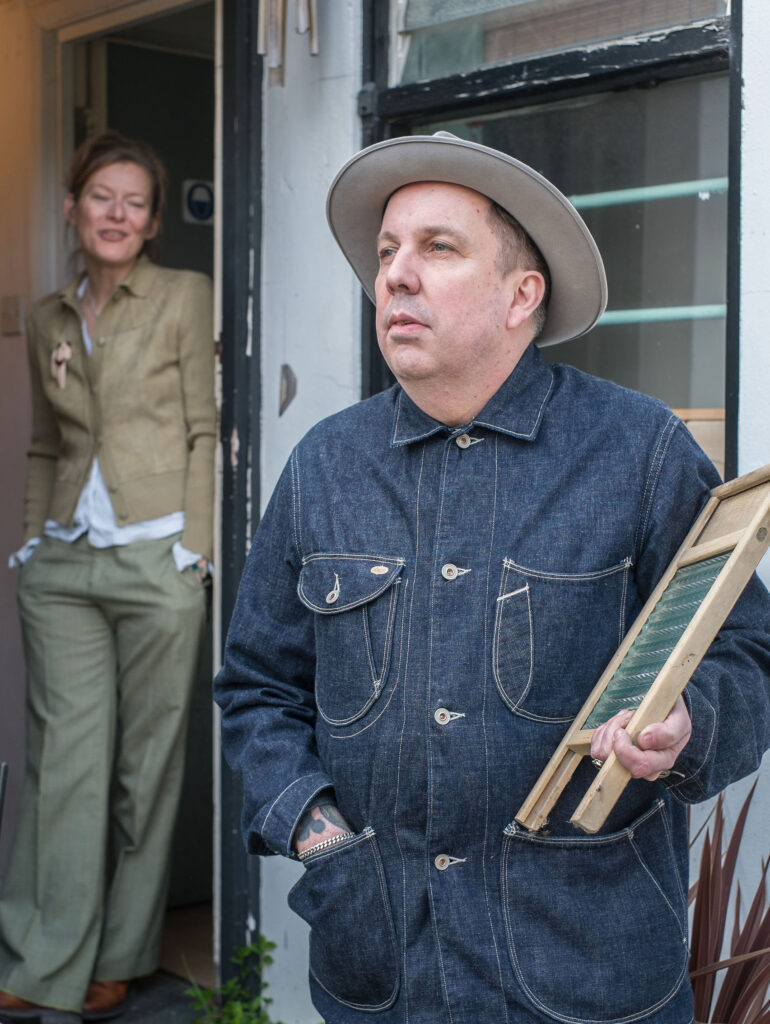
Photo: John Barrett
Walsh explains how she would be working across analogue and digital inputs as they shaped the recordings to a point of near completion.
“And that was when ‘one more elephant’ came in,” she says. “This would be something that Andrew believed was still missing and he would play it – a simple melody, three or four notes, little undercurrents rumbling below the surface.”
Among the resources available to Weatherall for ‘Phonox Nights’ were a number of sound libraries. These included a vast collection of drum loops amassed over a period of 20 years by Walsh’s partner Erick Legrand, who passed away in 2011. The pair also “totally ransacked” a trove of “incredible early musique concrète 78s” Walsh had digitised. To pay for the project, she suggested they create a copyright-free album of material for Loopmasters, ‘Andrew Weatherall & Nina Walsh WRF Lab Test’, which the sampling outlet markets as “a mystical collection of sounds delivered from another space and time” on their website.
This cosmic context is fitting. Because if the base inspiration for ‘Phonox Nights’ was as concrete as the bricks and mortar of the Brixton club, WRF’s execution is much closer to the starry-eyed ideology of ALFOS as a musical concept. The night was astutely billed as “an oasis of slowness in a world of increasing velocity” and Weatherall coined the term “drug chug” for this sonic adventure, prompting one journalist to herald it as a “space age, kosmische, ecstatic trip”.
In the earliest stages of ‘Phonox Nights’, Weatherall and Walsh envisioned creating an imaginary soundtrack for A Love From Outer Space that they could debut in real time, playing out chunks of material via the club’s state- of-the-art Funktion One sound system to the crowd of unsuspecting ALFOS devotees.
“We tried to keep everything to the ALFOS bpm, which meant not going over 122, although we did do that a few times,” says Walsh, who sees the album as an extension of her partner’s broader musical practice. “That’s what Andrew was doing most of the time anyway. He was building tools for his trade and that was it. We had no plan. We had no marketing strategies with anything we were doing. He was building tools so he could go out on the weekend and play these pieces of music that no one else had. Most people didn’t know what they were listening to. It was hilarious seeing them trying to Shazam the music.”
The result is a little over an hour of engrossing, enveloping space disco, powered by a unified stylistic identity befitting Weatherall’s whip-smart, sartorially sharp presence. The striking artwork on the front cover of the album is inspired by retro propaganda imagery and there’s a huge mirror ball at its centre. The mirror ball also appears on the back of the sleeve along with a rocket, which is something that had become synonymous with the ALFOS nights over the years.
Orbiting in the outer reaches amid clusters of intergalactic interference and snaking melodic pulses, there are some familiar, nostalgic flashes on ‘Phonox Nights’, despite Weatherall’s stated disdain for anything other than forward-thinking songwriting. Walsh admits the pair remained wedded to the sound and soul of acid house, which is reflected in how the Roland TB-303 is introduced within 60 seconds on the title track.
Elsewhere, a percussive loop seemingly derived from the same power source as A Guy Called Gerald’s ‘Voodoo Ray’ propels ‘Wolves Don’t Chase Hope (They Chase Rabbits)’, while the icy synth washes of ‘Boots & The Pike’ are a reminder that both The Sabres Of Paradise and Two Lone Swordsmen, two of the other main acts in Weatherall’s back catalogue as a performer, were signed to Warp Records. As Walsh confirms, the latter was inspired by his love of Stoodley Pike, the eerie, alien monument that sits atop a 1,300-foot hill near Todmorden, in the South Pennines of West Yorkshire.
Another highlight of the album is ‘Gates To The South’, which recalls a comedy sketch about Balham – where Weatherall would catch the train home to Walthamstow after a day in the studio – originally written by Frank Muir and Denis Norden for the 1950s BBC radio series ‘Third Division’ and later popularised by Peter Sellers. It was the last track the pair recorded.
So what was the WRF studio routine like?
“It was quite rigid,” replies Walsh. “Andrew was a grafter. He had a strong work ethic. He’d be out DJing all weekend and then he would be buzzing to get back into the studio, to tell the tale in music. I don’t know how he had the stamina to do it.”
Did he have any ambitions for ‘Phonox Nights’?
“Oh, he wasn’t ambitious, not in the usual sense of the word,” says Walsh. “He didn’t give a shit what people thought about his music. I remember Jagz Kooner once saying that Andrew was the least paranoid person he’d ever met. He cared more about the people who’d paid to see him DJ and how they reacted on the dancefloor. That was much more important to him.”
As had become a tradition in their lengthy musical alliance, Weatherall declared “Print!” on ‘Phonox Nights’ during their final day in the studio to signal the album’s completion. By this point, however, Walsh was becoming concerned that there was a problem with his health, which seemed to be deteriorating at the start of 2020. As it turned out, that day would be the last time she saw him.
Weatherall and Walsh first met inside a speaker cabinet in 1988 at Shoom, Danny Rampling’s fabled acid house night in Southwark Street, south London, that made heroes of DJs such as Terry Farley and Carl Cox. And, of course, Weatherall.
“He wanted to check that I was still breathing,” says Walsh. “I was very conscious and I was thoroughly enjoying myself. I fitted quite perfectly in one of those big old bass bins.”
So began a friendship that would go on to play a significant role in both their personal and professional lives across more than 30 years. But their improbable meeting at Shoom is certainly not the only comical and unlikely part of the story. Walsh grew up in the town of Frimley in Surrey and as a teenager she had a hand – quite literally – in one of the most famous British children’s television programmes of all time.
“’The Sooty Show’ rehearsal and model-making studios were in Frimley Green,” she says. “I’d written to them for work experience when I was at college but no-one replied. My mum said to me, ‘Right, let’s go down there’, so we did, and I went in with my big quiff and brothel creepers. I think they were quite shocked and impressed that I’d turned up.”
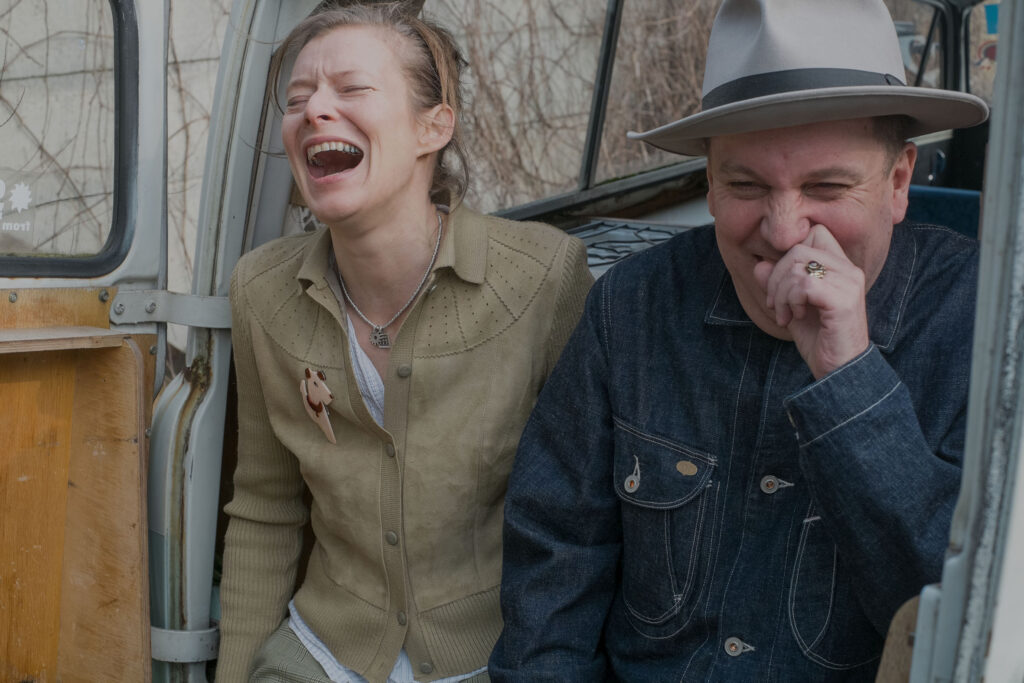
Photo: John Barrett
So much so, Walsh was offered a job on the spot. Her role? To operate the character of Sweep for the duration of the summer holidays.
“I was asked to start on the Monday,” she adds. “They came and picked me up in the Sootymobile.”
A few months after their initial encounter, Weatherall and Walsh began a romantic relationship that started with a date watching Prince play Wembley Arena on the ‘Lovesexy’ tour and ended around eight years later.
During this period, Walsh worked as a club promoter at London Records and as manager of WAU, the label founded by The Orb’s Alex Paterson and Killing Joke bass man Youth. She was also A&R for the musical arm of Boy’s Own, the fanzine, record company and events outfit Weatherall set up with Terry Farley, Pete Heller, Cymon Eckel and Steve Mayes. It was Boy’s Own that acted as the vehicle for Weatherall to make his name in underground culture.
Walsh was subsequently Weatherall’s partner at Sabres Of Paradise, the imprint he launched in 1993, around the same time that he formed the band of the same name with Jagz Kooner and Gary Burns from The Aloof.
The first release on the label was their interpretation of Throbbing Gristle’s ‘United’ and this was followed by other records by the trio, as well as material by the likes of Secret Knowledge, Waxworth Industries and Technova. A little later, Walsh expanded this portfolio with Sabrettes, a second collaborative label, whose roster included The Rabettes, Slab, Inky Blacknuss, Tony Sapiano and Chelsea Grin.
“We were learning on the job and got ourselves into all sorts of pickles for the love of music,” she says of their work as record company bosses. “It just grew and grew.”
Over the years, Walsh has also developed an enviable songwriting and production portfolio of her own. The Rabettes and Slab were her projects, the former a collaboration with Kris Needs from Secret Knowledge and the latter with Lol Hammond from The Drum Club, and she released a solo album called ‘Bright Lights & Filthy Nights’ in 2009. She has also written tracks for The Orb, engineered for Fuck Buttons and Warpaint, and contributed music to two seasons of the BBC TV drama ‘Killing Eve’. She is now the focus of a biography, provisionally titled ‘Punkadelic!’, which is currently being written by Kris Needs, and the pair star in the off-the-wall monthly YouTube podcast ‘Into The Cosmic Hutch’. Watch out for the occasional guest appearance of Sweep on the show. Yes, really.
It’s surely no exaggeration to say that Weatherall’s life changed with the release of Primal Scream’s ‘Loaded’ in February 1990. Having befriended Bobby Gillespie at a Shoom outdoor rave in Brighton, he went on to write an NME live review of the Primals’ show at Exeter Arts Centre a few weeks later, using the pseudonym Audrey Witherspoon. Warming to his connections and credentials, the NME piece prompted the band to request Weatherall remix ‘I’m Losing More Than I’ll Ever Have’ and light a fire under their smouldering career.
Walsh describes this immortal record as “such a fantastic indulgence”, noting that it highlighted the infinite possibilities offered by sample culture at the time. The success of Primal Scream’s accompanying ‘Screamadelica’ album, however, which featured an array of productions masterminded by Weatherall and won the Mercury Music Prize in 1992, proved to be a more conflicting experience.
“He felt like he’d created an absolute monster,” explains Walsh. “He felt like Dr Frankenstein, because suddenly all this indie dance shit happened. A lot of those bands weren’t any good in the first place, but record companies would insist on getting dance DJ remixes and the results were quite often atrocious. Andrew felt partially responsible for that, although he was happy with ‘Screamadelica’ itself. There are some great tunes on it and a lot of fun was had. Too much fun, probably.”
‘Screamadelica’ gave Weatherall the lionised profile and position required to facilitate the most creatively rewarding path forward. And while his first bespoke musical project was relatively short-lived, The Sabres Of Paradise produced three strong albums in three years. Plus the epic ‘Smokebelch II’, of course, arguably the band’s most affecting track and indisputably a post-club anthem. When the trio dissolved in 1995, he quickly formed Two Lone Swordsmen with Keith Tenniswood.
How did Weatherall enjoy being more fully integrated into a collective?
“He always loved that whole gang thing The Clash had,” says Walsh. “He had a look he wanted for Sabres and he took the band out shopping for these long leather trench coats. What they were projecting was quite sinister and he had it all in his head, even if he needed Jagz and Gary to realise his ideas in the studio.”
It was Weatherall’s singular work as a remixer that really crystallised his reputation, though, bringing together a forensic, esoteric musical taste with a celebratory, universal execution. It also provided a forum for mourning fans to pay homage in the days after his death. Among the many online tributes, Crack magazine produced a partially crowdsourced Spotify playlist running to more than 100 tracks, highlighting his deconstructive skill, dynamic range and prolific output.
What does Walsh think he was most proud of?
“His wardrobe,” she quips, before namechecking his 1990 reworking of the James track ‘Come Home’ as one of his personal favourite mixes. “That comes to mind because he felt it was a milestone for him. He came back from the studio feeling really chuffed with what he’d done and it certainly was a great track. He never charged much for his remixes, he never did it for the money, and in the end he couldn’t be arsed to do any more. He was giving a lot of his ideas away and he preferred to save them for this wonderful music we were creating at Facility 4.
“To be honest, I think the work he was most proud of was ’Phonox Nights’, mainly because he did so much of it himself. By that stage, he had achieved a technical level he’d never got to before and that freed him up to start being creative with keyboards.”
Andrew Weatherall’s reputation has continued to build in the years since his passing in 2020. A series of events took place in the UK a few months ago under the banner AW60, marking what would have been his 60th birthday, and there have been two recent documentaries about his now legendary “Fail We May, Sail We Must” tattoo, one a short film and the other a radio programme. All of which has contributed to what Nina Walsh refers to as the “hero worship” formed in the slipstream behind him, both in life and in death.
“Andrew was completely unique,” she states. “There was nobody like him. There never will be. A lot of people think they’re like Andrew, but they’re not, they’re a million miles away. He had the most incredible brain. His knowledge was so varied. He was quite brutal and harsh at times, though. He didn’t like time-wasting. He was funny as fuck…”
She pauses for a brief moment.
“I miss him,” she says.
There has also been lots more music. ‘The Weatherdrive’, for example, an online repository of 1,300 hours of Weatherall’s studio mixes, live recordings and radio shows, built by fans and spanning 1988 to 2020. There’s a wealth of material to be heard on the Woodleigh Research Facility Bandcamp page too, which Walsh has been busy populating with an ever-growing collection of unreleased tracks from her vast archive. Her latest WRF uploads are the ‘Apparently Solo’ EPs, five volumes so far, each of them another engrossing chapter in the untamed adventures in left-field electronic music recorded during this period at Facility 4.
’Apparently Solo Volume 4’ is the standout. Released in August, it features three mixes of ‘Borderland’, a track that sounds very much like a genuine “lost” Weatherall classic. Or, as he once told Walsh, “The next ‘Smokebelch’”. It was due to be debuted at a 2020 WRF live show at the Barbican in London as part of the launch of Richard King’s ‘The Lark Ascending: People, Music And Landscape In Twentieth-Century Britain’ book for Faber & Faber, where Weatherall was artist-in-residence. Circumstances meant that the gig sadly never happened.
Jagz Kooner’s euphoric take on ‘Borderland’, which Walsh invited the Sabres man to do in 2021, culminates in a bedazzled, unmistakable sample of Weatherall whispering, “Can you see the rockets?”. In tandem with ‘Phonox Nights’, it frames the final trajectory of the feted career of a true legend of electronic music, now a distant star himself.
Woodleigh Research Facility’s ‘Phonox Nights’ is released by Facility 4 / !K7
